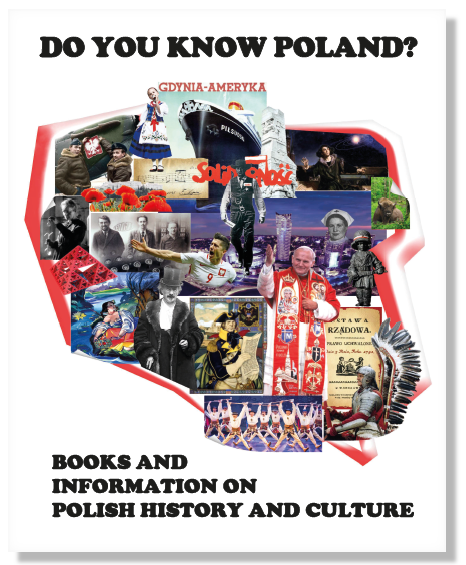Archive for January, 2021
2021 Polish Ministry of Education and Science oficials visit Wisconsin
POLISH OFFICIALS VISIT WISCONSIN
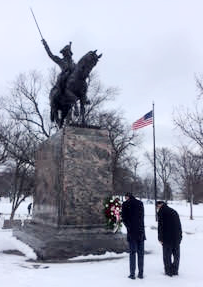
David Rydzewski reports
Polish officials, Bartosz Rybak of the Ministry of Education and Science and Vice Consul Piotr Semeniuk of the Polish Consulate in Chicago were in Milwaukee on January 14th to announce the launch of a student exchange of students from Mukwonago High School to Poland and Polish students who will travel to Mukwonago.
Beginning the day Rybak, Semeniuk and State Representative Ken Skowronski laid memorial wreaths at the foot of the Kosciuszko Monument, commemorating the very deep ties between Poland and the United States, beginning with Poles who came to the aid of our new nation in its fight for freedom and independence. Those attending the wreath laying ceremony included Angela and Donald Pienkos and myself.
It should be noted here that through the efforts of the Wisconsin Polish American Congress, the Polish Heritage Alliance of Wisconsin, and many other fine Wisconsin Polish American organizations, a solid and very positive relationship has been established between our community, our State of Wisconsin and the Consulate General of the Polish Republic in Chicago.
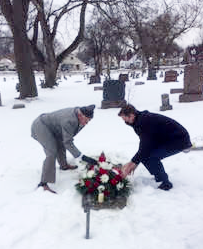
Representatives of the Consulate General have frequently visited Milwaukee and other historically Polish communities in Wisconsin over the last thirty years. Cooperation between Poland and Wisconsin Polonia has been many sided and substantial. We hope this relationship will continue to grow in a mutually beneficial fashion.
Later they travelled to St. Adalbert Cemetery for a wreath laying at the grave of Tekla Dembinski, a member of the 1901 “Childrens Strike” in Wrzesnia.
Historian Patrice Dabrowski writes in her book “Poland: The First Thousand Years” about the Wrzesnia strike “In this town pupils at the local school rebelled and went on strike when they were told their religion classes would now be conducted in German. This reaction of Poles is worth noting. Since the Kulturkampf, instruction in most subjects had been taught in German. Now in 1901 pressure was being put on the schools to remove the last impediment to education being wholly in the language of state: the instruction of religion in a pupils native tongue.
… Parents as well as pupils feared that they would be taught Protestantism instead of their Roman Catholic faith. Given the Kulturkampf (that is, the persecution of both Poles and their faith) of the 1870’s, perhaps this was not an irrational fear.While the average village Pole may have cared little about education in German, it did not mean that he cared little about his prospects for eternal life. This was a threat the fiercely faithful Polish Catholics in the German Empire could not countenance – hence the protests.
The protests struck a raw nerve. The striking pupils were punished for being disobedient. Their parents who came to the school to defend their children, fared no better: they were beaten, put on trial, and given sentences that seemed way out of proportion, given the infraction.
Famous Poles across the partitioned lands rallied in defense of these poor Poles under German rule”. Ignacy Paderewski in late 1901 declared that the the proceeds of a concert he gave in Germany would be given to the Wrzesnia activists. He was booed and boycotted by German audiences. As a result he refused to perform in Germany.
TEKLA TOMASZEWSKA (MARRIED NAME: DEMBINSKI) WAS BORN 12 SEPT. 1888 IN WRZESNIA (WRESCHEN) IN POLAND. SHE CAME TO AMERICA IN 1909. TEKLA’S BROTHER FRANCISZEK X. TOMASZEWSKI WAS A POLISH JOURNALIST IN DETROIT AND HER BROTHER ALEKSANDER WAS A VIRTUTI MILITARI CAVALIER (1921). IN 1912 SHE MARRIED TOMASZ DEMBINSKI. TEKLA IS ONE OF THE CHILDREN FROM A “SCHOOL STRIKE” IN MAY 1901 IN WRZESNIA: SCHOOL STRIKE BY POLISH CHILDREN IN MAY 1901 IN WRZESNIA (WRESCHEN) WAS A RESPONSE TO THE INTENSIFICATION OF GERMANIZATION (I.E. PROHIBITION OF POLISH LANGUAGE AT SCHOOL). FOR REFUSING TO STOP SPEAKING POLISH, POLISH CHILDREN WERE FLOGGED AND BEATEN FOR SEVERAL HOURS BY PRUSSIAN TEACHERS, IN A MANNER SO SEVERE THAT SOME OF THE CHILDREN HAD THEIR FLESH STRIPPED FROM THEIR ARMS. PARENTS WHO TRIED TO BREAK INTO THE SCHOOL AND PROTECT THEIR CHILDREN FROM PRUSSIAN TEACHERS WERE PUNISHED LATER BY PRUSSIAN COURT STATING THAT THEIR ACTIONS WERE “ATROCIOUS ACTS AGAINST THE STATE”.
2021 DYKP Contest, KF Gallery and Dr. Pease lectures
Join in the fun and enter Competition
░D░o░░y░o░u░ ░k░n░o░w░
░P░O░L░A░N░D░?░
The contest challenges all to give their knowledge of Polish heritage a test by identifying images on the new cover of the “Do You Know Poland?” booklet.
There are no prizes in this contest other than the pride of excelling in knowledge of Polish heritage and publicized recognition for winning the contest.
Winners will be announced by March 15, 2021 on this website and later in the national PAC newsletter.
The entry should include a short description of each image in the mosaic, starting at the 11 o’clock position and moving clockwise from outer edge to the center.
The best way to see the enlarged image is to download the booklet and use the Adobe Reader size controls.
► download the booklet here ◄
ENTRIES ARE DUE BY FEBRUARY 28, 2021
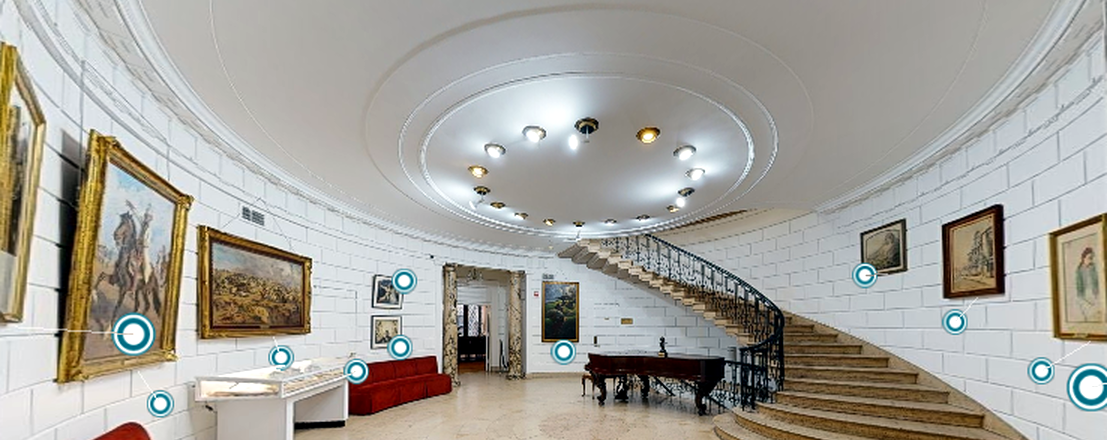 The Kosciuszko Foundation Gallery listed in the Do You Know Poland booklet is now open for virtual touring.
The Kosciuszko Foundation Gallery listed in the Do You Know Poland booklet is now open for virtual touring.
The gallery includes works by great Polish painters such as Jan Matejko, Józef Chełmoński, Jacek Malczewski, Wojciech Kossak, Tade Styka, Józef Brandt, Władysław T. Benda and others.
The gallery is located in the Van Alen Mansion, one of the NYC’s architectural treasures,
the Foundation’s home since 1945.
Click here – or on the image above –
to enter the gallery.
Poland Through the Centuries:
Who, What, Where, When?
In a series of lectures recorded on the invitation from the Polish Center of WI, Prof. NEAL PEASE (UW-Milwaukee) explains how much Poland, its boundaries and the very idea of Polishness, have changed over the centuries
Click here – or on the image below –
to view the first lecture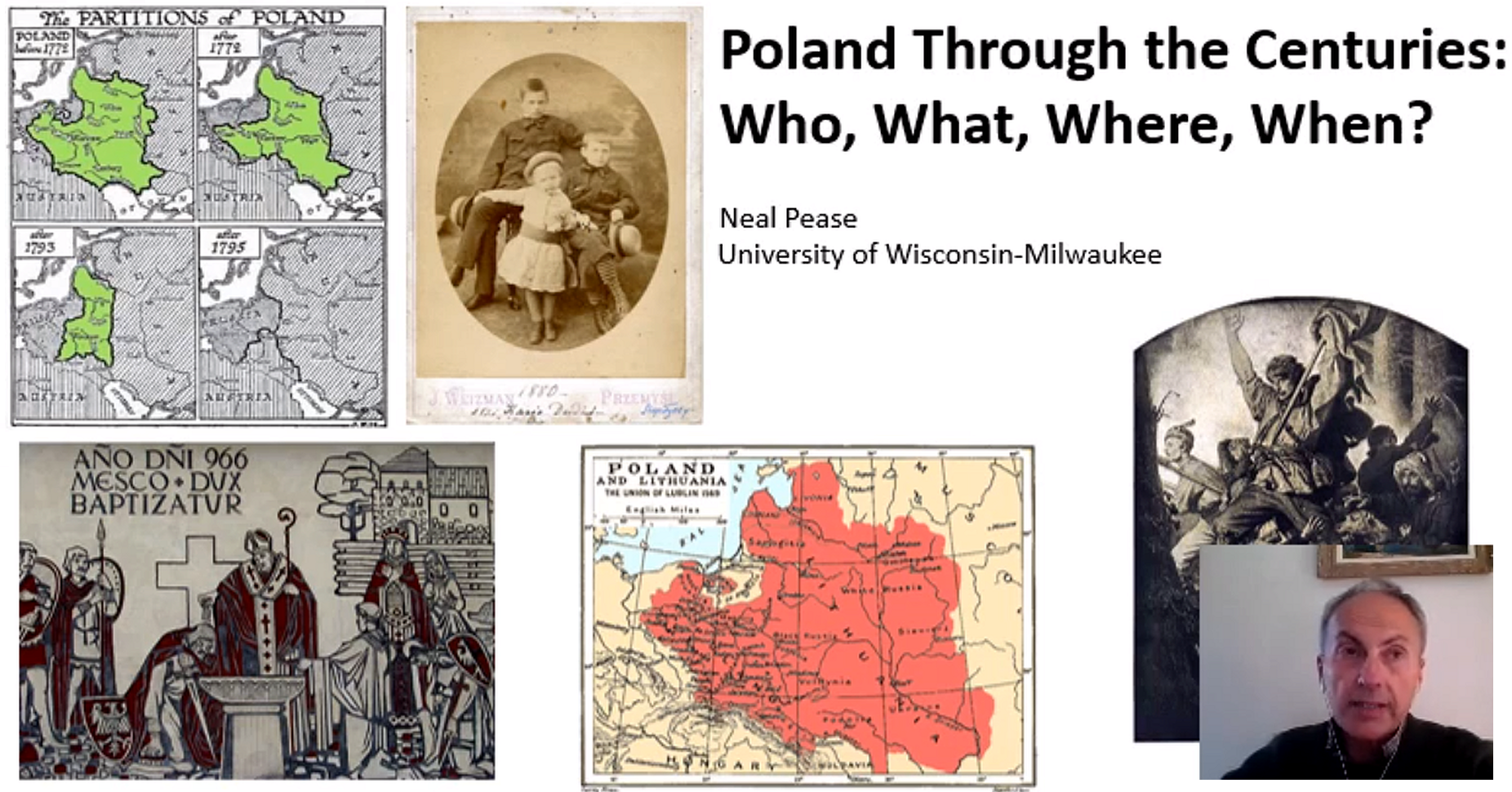
LOST BORDERS: IN THE FOOTSTEPS OF THE SECOND POLISH REPUBLIC
From the Kosciuszko Foundation FB page, here comes an extraordinary online report from the journey along the frontiers of pre-war Poland – including the territories of today’s Poland (Kashubia, Greater Poland, Silesia), through the Czech Republic and Ukraine, to Belarus, Latvia, and Lithuania.
“The journey is not about stone pillars, but ordinary people who, despite the
atrocities of the 20th century, were trying to survive on the erased border,”
say authors Tomasz Grzywaczewski and Kaja Grzywaczewska.
►Click here to begin the journey◄
Archived Posts
- 2023 Merry Christmas
- 2023 Lighting the Light of Freedom on Dec 13 at 7:30pm
- Independence Day and Veteran Day invitation
- 2023 Wianki Festival
- 2023 May 3rd Constitution Day Celebration
- 2023 Lecture on Polish Borders by Prof. Don Pienkos
- 2023 REMEMBER THIS: Jan Karski movie premieres on PBS Wisconsin
- 2023 Upcoming lectures in the Polish Center of Wisconsin
- 2022 Polish National Independence Day
- 2022 Independence and Veteran Day Luncheon (invitation)
- 2022 Wianki, Polish Celebration of Noc Świętojańska (St. John’s Night)
- Celebrating Constitution of May 3, 1791 in Polish Center of Wisconsin
- 2022 Polish Constitution Day, Polish Flag Day and the Day of Polonia
- 2022 March Bulletin
- 2022 Polonia For Ukraine Donations
- 2022 Polish American Congress Condemns Russian Invasion of Ukraine
- 2022 PAC-WI State Division Letters to WI Senators and Representatives
- 2021 Polish Christmas Carols
- 2021 Panel Discussion: Martial Law in Poland 1981-1983 (REPORT)
- 2021 Panel Discussion: Martial Law. Poland 1981-1983 (invitation)
- 2021 Solidarity: Underground Publishing and Martial Law 1981-1983
- 2021 Polish Independence Day and Veterans Day
- 2021 Polish Independence Day and Veterans Day Luncheon
- 2021 Prof. Pienkos lecture: Polish Vote in US Presidential Elections
- 2021 POLISH HERITAGE MONTH EVENTS
- 2021 “Freedom” Monument Unveiled in Stevens Point, Wisconsin
- 2021 PCW Picnic and Fair
- 2021 Remembering Września Children Strikes (1901-1903)
- 2021 May 3 Constitution Day
- 2021 DYKP Contest Winners and Answers
- 2021 DYKP CONTEST EXTENDED and CASIMIR PULASKI DAY
- 2021 February announcements
- 2021 Polish Ministry of Education and Science oficials visit Wisconsin
- 2021 DYKP Contest, KF Gallery and Dr. Pease lectures
- 2020 Help Enact Resolution commemorating the 80th Anniversary of the Katyn Massacre
- 2020 Independence And Veterans Day
- 2020 Remembering Paderewski
- 2020 POLISH HERITAGE MONTH
- 2020 Solidarity born 40 years ago
- 2020 Battle of Warsaw Centenary
- 2020 The Warsaw Rising Remembrance
- 2020 June/July News: Polish Elections, Polish Films Online and more
- 2020 Poland: Virtual Tours
- Centennial of John Paul II’s Birth
- 2020 Celebrating Polish Flag, Polonia and Constitution of May 3rd
- 2020 Polish Easter Traditions
- 2020 Census and Annual Election
- Flavor of Poland (Update 3)
- 2020 Copernicus, Banach & Enigma talk
- 2020 Do You Know Poland and other announcements
- 2020 Flavor of Poland (Update 2)
- 2020 People and Events of the Year
- 2019 Holidays
- 2019 December Medley
- 2019 Independence Celebration
- 2019 Independence Invitation
- 2019 WI Study in Poland Reports
- Lecture: Poland’s Entry Into the NATO
- August 2019 anniversaries
- 2019 Polish Fest
- Celebrating Polish Constitution and Ignacy Paderewski
- WSIP 2018 Reports (Wisconsin Study in Poland)
- 2018 Christmas Carols
- 2018 Polish Independence and Veterans Day
- November 2018 events
- October 2018 Events
- 2018 Kashube Lecture Notes
- September 2018 events
- 2018 Polish Fest Report
- Upcoming 2018 Polish Fest
- Celebrating Polish Constitution Day
- Poland 1979-1989 (panel discussion)
- Protest the Passage of S.447 in the U.S. House of Representatives



